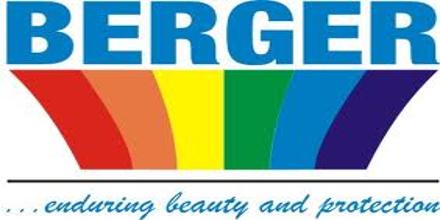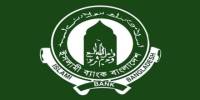Business Development Process of Berger Paints
Berger Paints began its painting in Bangladesh since independence. Over the decades, Berger has evolved to becoming the leading paint solution provider in this country and has diversified into every sphere of the industry – from Decorative Paints to Industrial Coatings, from Marine Coatings to Powder Coating and what not. To give a comprehensive and sustainable painting solution to the need of the industry, Berger has invested more on technology and Research & Development (R & D) than any other manufacturer in this market. It selects the raw materials from some of the best known names in the world: Mitsui, Mobil, Dupont, Hoechst and Basf are a few to name. The superior quality of Berger’s products has been possible because of support from its advanced plants and an international-standard of strict quality. Investment in technology and plant capacity is even more evident from the new factory of Berger Paints Bangladesh Limited at Savar. The state-of-the-art factory is an addition to Berger’s capacity to make it the paint-giant in Bangladesh. Not to forget about the first Double Tight Can manufacturing unit in its Chittagong factory. All, together with devotion to make it the reputed center of Basic & Applied Research in paint and Resin Technology, proof the commitment that Berger has for this industry. With its strong distribution network, Berger has reached almost every corner of Bangladesh. Nationwide Dealer Network, supported by 7 Sales Depots strategically located at Dhaka, Chittagong, Rajshahi, Khulna, Bogra, Sylhet and Comilla has an unmatched capability to answer to paint needs at almost anywhere in Bangladesh. The sheer innovation and development drive is reflected on the various products Berger has so far launched in this market.
Business Principles:
The vision and mission of Berger paints Bangladesh Limited (BPBL) is very transparent and tangible. Berger emphasizes highly on the ethical commitment to produce benchmark quality product. Vision & mission of the company is:
Vision:
To be the most preferred brand in the industry ensuring consumer delight.

Mission:
We shall increase our turnover by 100 percent in every five years. We shall remain socially committed ethical company.
Spirit
BPBL will be a confluence of the following three interests:
- Of the Paint: Profit Maximization and Sustained Growth.
- Of the Customer: Maximum Benefit and Satisfaction.
- Of the Society: Maximization of Welfare.
Values –
- Customer focus
- Integrity
- Team Work
- Respect for individual
- Quality
- Responsible citizenship
Tagline
The tagline of Berger paints is “Trusted Worldwide” and this tagline are used all over the world.
It assures that Berger paints produce supreme quality paints and always ready to serve its customers to its best.
Step in the L/C opening process:
L/C Issuing Process:
The generalized process of L/C issuing in Citi N/A is explained below. For BPBL customer approached for the first time, the process will be started with opening an account with the Citi N/A.
Step 1: Application in company’s letterhead pad
First of all, BPBL have to submit an application written or printed in the company’s letterhead pad. In the application BPBL have to mention the name of the products to be imported, margin and so on. The BPBL have to apply for the required forms of the Citi N/A.
Step 2: Discussion between Bank and the party
After receiving the application form, the Citi N/A pays attention to the issues mentioned below;
The quoted rates are specially analyzed as there also some restrictions by the government.
The products that are going to be imported are considered. Because there are restrictions by the government on some products
Step 3: Collecting forms and depositing those with necessary documents:
In this step, the BPBL collects the L/C application form, LCA Form and IMP Form from Citi N/A. These forms are to be filled up by the client. The forms and all other necessary documents are then deposited at the desk of the dealing officer.
Step 4: Checking Documents
All the documents are checked out by the dealing officer. BPBL checks specially the quoted rates, the terms and conditions of the indent or pro forma invoice and the validity of the documents. Generally the person from whom the forms are collected is engaged in checking out the documents.
Step 5: Putting L/C No.
After checking the documents and L/C No. is given. Generally the officer who checks the documents puts the L/C No.
Step 6: Preparing offering sheet
The offering sheet is prepared by the dealing officer. Usually the officer who checks the documents prepares the offering sheet.
Step 7: Singing offering sheet
The offering sheet is then signed by the officer having the authority to open the L/C of the specified amount. If it is within the maximum limit of the amount (for which the L/C is applied) of the SAVP or branch manager, he can sign it. But if it is beyond BPBL limit proposal must be sent to the head office, either for case-to-case sanction or for credit limit. Generally, in Citi N/A , SAVP or branch managers forward the documents to the head office to approve L/C authorize.
Step 8: Typing the L/C
After the approval of opening L/C is given, the L/C is typed in a structured format.
Step 9: Checking the L/C
A final check is done to find out any discrepancies after the typing is completed. This is done by the dealing officer who is generally in charge of the whole process.
Step 10: Crediting the account of the customer
On the basis of credit arrangement with the bank of r import financing, the customer’s account is affected with certain credit.
Step 11: Dispatching L/C
At the final stage, the L/C is dispatched through postage mail or telex or SWIFT or so forth. Although this is the generalized process for issuing L/C, for the speed of the process sometimes the typing and checking of documents are done before the offering sheet is signed. Then after signing the L/C it is dispatched.
Settlement of L/C:
Settlement means fulfilling the commitment of issuing bank is regard to effect payment subject to satisfying the credit terms fully.
- Settlement of Payment
- Settlement of Acceptance
- Settlement of Negotiation
Settlement of Payment
Here the BPBL presents the doc to the paying Citi N/A. In compliance presentation paying Citi N/A makes payment to the beneficiary and in case this Citi N/A is other than the issuing Citi N/A, then sends the doc to the issuing Citi N/A. If the issuing bank is satisfied with the requirements, payment is obtained by the paying bank from the issuing Citi N/A.
Settlement of Acceptance
Under this arrangement, seller submits the documents evidencing the shipment to the accepting Citi N/A accompanied by the draft drawn on Citi N/A at the specified tenor. After being satisfied with the documents, the Citi N/A accepts the docs and draft if it is Citi N/A other than the issuing Citi N/A, then sends the docs to the issuing Citi N/A stating that it has accepted the draft and at maturity the reimbursement will be obtained in the pre-agreed manner.
Settlement of Negotiation
This settlement procedure starts with the submission of docs by the seller to the negotiating Citi N/A accompanied by the draft drawn on the drawer at sight or at a tenor, as specified in the credit. After scrutinizing that the docs meet the credit requirements, the Citi N/A may negotiate the draft. This Citi N/A, if other than the issuing Citi N/A, then sends the docs and the draft to the issuing Citi N/A. As usual, reimbursement will be obtained in the pre-agreed manner.
The Cash Flow Budget:
This is a prediction of future cash receipts and expenditures for a particular time period of BPBL. It usually covers a period in the short term future. The cash flow budget helps BPBL determine when income will be sufficient to cover expenses and when BPBL will need to seek outside financing.
In its simplest form, cash flow is the movement of money in and out of BPBL. It could be described as the process in which BPBL uses cash to generate goods or services for the sale to its customers, collects the cash from the sales and then completes this cycle all over again.
- Keeping Inflows Flowing to BPBL
- Delaying Outflows as Long as Possible
- Profit and Loss (Income) Statements
- Balance Sheets
Description/nature of the job/s: It was a great opportunity for me to work with the treasury management department of Berger paints Bangladesh limited .Basically I have worked here in 3 sections:
- Accounts Payable Import
- Cash Planning and Banking
- Credit Management
Among these 3 sections my main job task was in Accounts Payable Import part because my supervisor is the assistant manager of accounts payable section.
Nature of my job –
Bank Reconciliation
Foreign Exchange Rate Forecasting and Settlement
Calculation and analyzing the bill of Daily/Monthly sales
Input Data and posting by using SAP (System Applications and Products in Data Processing) application.
Specific responsibilities of the job:
In the beginning of every month I have to complete bank Reconciliation. It was one of the most important tasks for me in my intern period. Banks always send their bank statement to Berger paints with in 1st week. After receiving that I have started to work with the Bank statement and GL Account. First of all I have to find out the fund purchase items, Opening charges and LC charges. After that I am going to complete bank reconciliation within a short time. One of the important tasks of my job was to calculate and analyze the bill of daily/monthly sales. After analyzing those I am going to use SAP (System Applications and Products in Data Processing) application by posting the amounts according the dates and category. It was a great experience for me to work by SAP application. My supervisor helps me a lot to make me flexible for run this software. It was observed that the whole Financial Department of Berger paints are totally dependable on SAP. I must have to say that I am the first person who got the opportunity to be familiar with SAP as an intern.
Executive Management Team:
Mr. Mohammad Khasru Meah Managing Director Finance, GM-Manufacturing GM-Sales & Marketing GM-Treasury & Financial Accounting GM-Human Resource & Administration GMFinancial Planning & Monitoring GM-Supply Chain GM-Business Process, Risk & Compliance GM-Information Technology Head of Research & Development Plant Manager, Dhaka Factory Plant Manager, Chittagong Factory Head of Marketing General Sales Manager (GSM)-Trade GSM-Industrial, Marine & Special Coatings Manager-Human Resource Sales ManagerProjects, Pro-links & Home Décor Manager-Admin & Labor Relations Head-Value Added Tax Head of Cost Accounting
Different aspects of job performance:
In whole three months job period I feel to work with a very flexible environment at treasury department. I have always tried to keep myself honest and worked hard. In the first month of my joining when it takes almost 3or 4 days to complete Bank reconciliation .But at the last month of my intern period I did it in a few hours. Overall I tried to keep a good performance in my total 3 months job period.
Critical observations and recommendations:
BPBL needs to make sure that they have a clear view of the true cash position at any point of time. Since they deal with multiple banks, it may get difficult to know the true cash standings. Treasury department should maintain safety cash balance to meet unanticipated demands of cash and keep safety foreign currency to open LC and minimize the exchange rate risk. BPBL has strong and good liquidity position and had no opportunity to run out from short-term financial solvency and this ability rises gradually (Current/Quick/Cash).BPBLs most of debts consist of creditors and accrual so BPBLs borrowing cost is insignificant. As a result BPBL is in good position regarding borrowed money compared to the resources invested by the shareholders (Debt to equity ratio).BPBLs asset-liability management efficiency increased day by day. BPBL is the less leveraged company and it has lower financial risk (Total Debt Ratio).The company is also able to use its assets and equity efficiently and effectively. The company increases its sales through inventory control and was efficiently managing and selling its inventory so BPBL tied up the fewer funds.
Recommendation:
According to the summary of limitations or problems the followings are recommendations for overcoming or correcting errors and improving BPBLs treasury management process as well as for BPBL profitability growth:
- BPBL needs to make sure that they have a clear view of the true cash position at any point of time. Since they deal with multiple banks, it may get difficult to know the true cash standings. For this purpose they need to have better internal controls so that the flow of information among all the departments is smooth. BPBL and its bankers should drive for the convergence towards electronic payments and collections to better integrate money and information flows. This will help the treasurers to exactly determine the cash position of the company on the real time basis.
The other areas in which cash has to be efficiently managed include:
- Explore centralizing cash and treasury management
- Ensure that treasury and cash management systems are up to date
- BPBL should maintain a collection account, a bank which have branch not only in urban area but also in remote area.
- Treasury department should retain success of collection of fund and try to reduce collection delay and processing time more.
- BPBL should increase online collaboration with banks to create effective relationship between its financial partners.
- BPBL needs to have better visibility of the cash standing so that they can effectively disburse their surpluses and deal with negative cash balances. An obvious place to start is to sweep any surpluses into deposit accounts or investing in short-term money markets. Where loans exist or accounts are overdrawn, cash can be more productively used to offset these, thus minimizing interest payments.
- Treasury Department should increase financial electronic data interchange system to eliminate paper or invoice which is increase efficiency in treasury management and support to file management and task can be done promptly.
- Treasury department should maintain safety cash balance to meet unanticipated demands of cash and keep safety foreign currency to open LC and minimize the exchange rate risk.
- The current assets should be managed more effectively so to avoid unnecessary blocking of capital that can be used for other purposes.
- BPBL should increase efficiency in inventory management. Company should reduce inventory holding days with use of Zero inventory concepts for reducing or warehousing cost by bringing efficiency in sales and marketing activities.
- BPBL tries to maintain profit after tax growth rate at the same growth rate of turnover. BPBLs operating profit margin was highly reduced from gross profit margin, so BPBL should concern on reducing high administrative and selling expense efficiently.
- BPBL need to take initiative to introduce backward integrated firm for producing raw materials to take cost advantage.
Conclusion:
Treasury management is increasingly assuming more strategic roles in companies. Thus, it is a challenge for the treasury department to continue making effective and efficient management of collection and disbursement of cash flow. Finally it was observed that, the treasury management procedure of BPBL is a sound, effective an efficient process. The report evaluates the collection and disbursement process, cash management, short-term liability and investment management through ratio analysis and other tools. The report also examines the company financial performance. The various ratios calculated are an indicator as to the fact that the profitability of the firm are on a rise. It is really a challenge for BPBL to retain success in financial performance, profitability growth and competitive advantage.
It was a great opportunity for me to work with one of the leading company of Bangladesh. My aim was to understand treasury management procedure of Berger Paints Bangladesh Limited through analyzing and evaluating treasury functions. Bank Reconciliation, Foreign Exchange Rate Forecasting and Settlement, Calculation and analyzing the bill of daily/Monthly sales, Annual Forecasting and the most important SAP (System Applications and Products in Data Processing) in treasury department was the part of my learning’s.
















